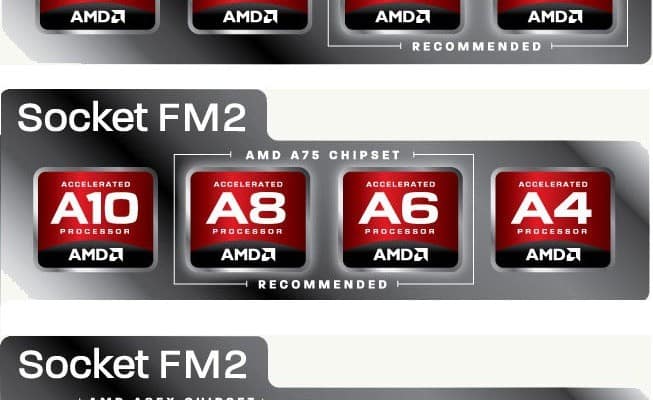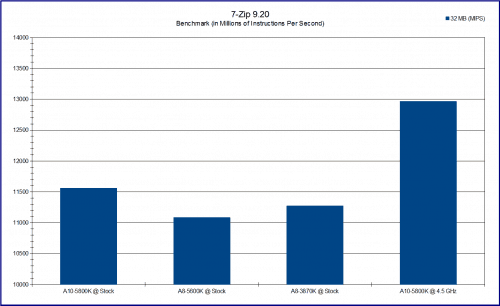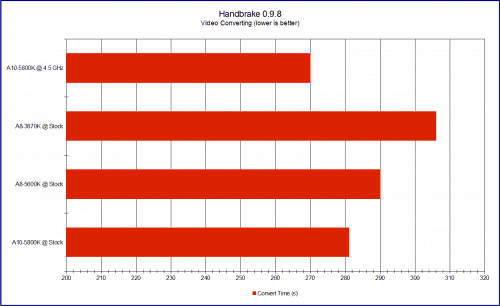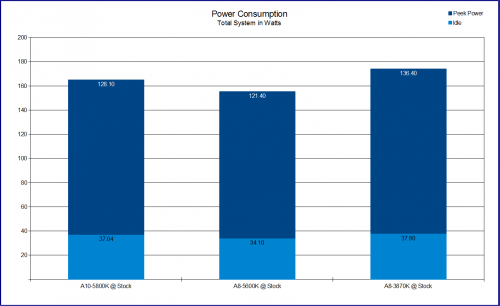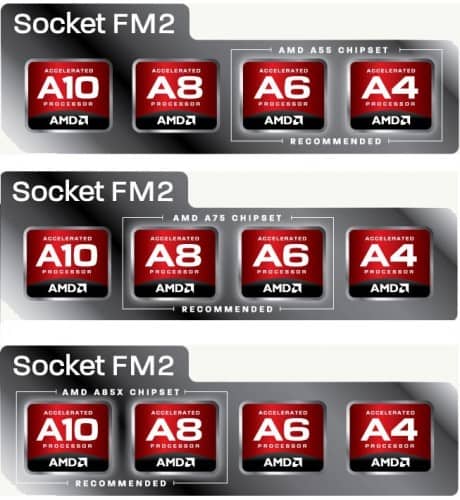Real World CPU Performance (7-zip)
These test are straight forward testing of the CPU doing a real world task. While the 7-zip test is pre-designed, it is simply testing its own performance with random number compression and decompression.
The A8-3870K once again gets by the A8-5600K by a small margin. It still is not able to reach the A10-5800K in performance however, but does come very close.
Real World CPU Performance (Handbrake 0.9.8)
Though the software has had a few updates since I last used it for testing, we don’t see anything that would improve the overall encoding performance. It continues to be a good test of real world video encoding performance. Our test is configured by converting a 720p HD video from its default format to fit an iPhone4.
This test shows the 5800K and 5600K using that clock speed advantage to its best. This does not discount the 16 second improvement with the 5600K and 24 second improvement with the 5800K. Overclocking the 5800K to 4.5 GHz nets an additional 11 seconds shaved off for a total advantage of 35 seconds when converting video. If you convert a lot of video over the course of a year, this can lead to a lot of time saved.
Power Consumption
Once again this is full system performance, so take these figures with a grain of salt as the motherboard itself could affect these figures somewhat. Please also keep in mind the low power state for the A8-3870K is at 800 MHz while both of the Trinity chips only go down to 1.4 GHz. This is significant as it does affect non CPU intensive tasks.
Power consumption can vary from chip to chip. My A8-3870K uses slightly more power at both idle and full power. The difference at idle is small enough to ignore and full load only shows 8 watt difference. I enjoy the improvement, but we will not see significant drops until AMD switches to a new fabrication process.
Final Thoughts
I can’t say that I am impressed with the new Virgo platform and Trinity APUs, but I am not disappointed either. The new on-die GPU once again shows it has more muscle than you would expect considering “so-called” competitive offerings. Will you be playing AAA titles at maxed out settings? No. But you can easily play most at medium settings with decent frame rates for under $500 for an entire system. And if you are still playing titles from 1 or 2 years ago, then this is more than enough to distract college students who should be doing homework. And homework is done quite well thanks to its overall performance as a package.
On the CPU side of things, this is where I find myself a little conflicted. I would like to say Piledriver will breath new life into the FX line, but I don’t see it happening. There is clearly an improvement, but it is mainly refinement with minimal gains when compared to Llano and Bulldozer. I would like to see Piledriver with a L3 cache and 4 modules (8 integer cores) and what it could do in a true head to head fight with the old FX-8150. If AMD sticks to its release schedule, this could be soon.
When it is all said and done the new Virgo Platform and its Trinity APUs do deliver in terms of features and user experience. We gain AMD AMP!, CrossfireX support, AMD TurboCore 3.0, and additional SATA ports. These features expand on the APU platform as being more all-purpose with the ability to appeal to a broader audience. It does leave those with Llano systems a little short-changed as there is no easy upgrade path to Trinity without a new motherboard, and there is no backwards capability either. But at the same time, if Llano already does everything you need, this doesn’t seem like a bang for buck upgrade.
But if you’re building a brand new system today, there is no doubt in my mind that for the $129.99 you spend on an A10-5800K, you can build one very capable system for around $500 or less complete. If you choose to spend more for better memory and maybe an SSD, you’ll have a system that will fulfill all your day to day tasks without delay, and still be able to keep up with a vast library of games on the weekend.
The Virgo Platform and the Trinity APU is no revolution, but it’s definitely a step in the right direction for AMD and a real gift for mass market users looking for a great mix of value and performance.
Pros:
- Single and Multi-threaded Performance Improvement
- New Instruction Sets
- Improved Memory Controller
- AMD CrossfireX Support
- AMD AMP! Support
- AMD TurboCore 3.0
- Less need for secondary USB 3.0 and SATA Controllers
- Great on-die GPU overclocking
Cons:
- Performance Difference Task Specific
- CPU core performance still well behind Intel
- No Compatibility with FM1
- Insignificant Power Consumption Improvement
Overall Score: 8.5/10
Help Us Improve Our Reviews By leaving a Comment Below

